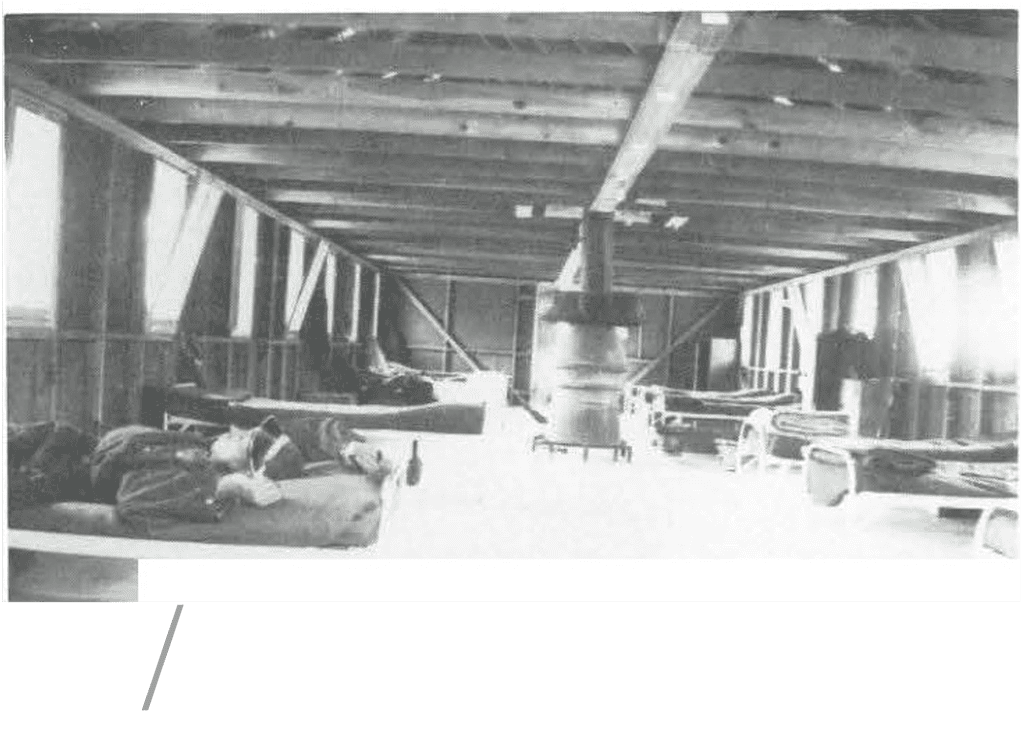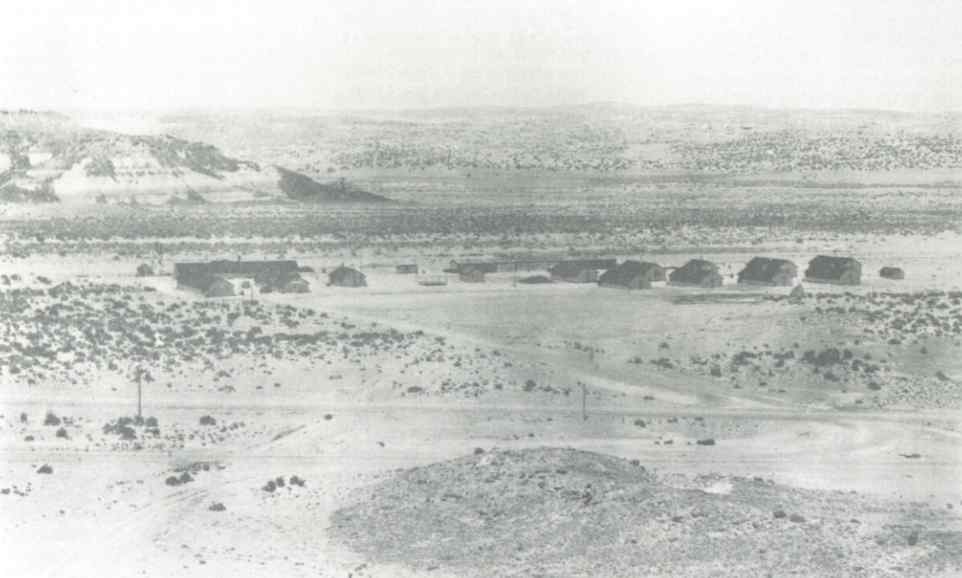Some information may be outdated.
Before the 1943 incarceration of Japanese Americans and Moab’s role in these national-scale events, the Dalton Wells area north of Moab had another use: a Civilian Conservation Corps camp.
This week, we continue our exploration of the Fall/Winter 1993 issue of the Canyon Legacy and Bruce D. Louthan’s work exploring Dalton Wells’ history as a CCC camp, diving into the construction and appearance of the camp before 1943.
Construction of Dalton Wells
Like most CCC camps, Dalton Wells, or Camp DG-32 as it was formally styled, was built by actual [CCC] enrollees supervised by Army officers, mostly from the Corps of Engineers, and locally experienced men, so-called LEMs, in this case, an advanced crew from Camp F-37. Moon Lake, in the Uintah Basin, arrived and began construction on the new facility on July 10, 1935. Work continued until early October when the Moon Lake contingent returned to its mother camp. Perhaps due to the poor timing during the hottest part of the year, lack of equipment or other reasons, the camp was not well finished. The first superintendent, Joseph Pratt Allred, commented at length in his first six-month report.
The main body of enrollees arrived on October 25, 1935.
…and were very disheartened at the condition in which the camp was found.
…the well which was to furnish water for the camp was in no condition to be used. … It was necessary to haul water from Moab.
…[but] within four days a well [in fact, two wells] had
been drilled and was supplying water thru the camp system.
…the camp was built on a sand pile and all cars and trucks…immediately became mired axle-deep in sand. This situation was overcome by hauling [shale} S.W.-facing material and surfacing roads and walks throughout the entire camp.
…the buildings were not complete…and considerable time was spent ..making the buildings habitable and comfortable.

Dalton Wells CCC Camp, as it appeared when first completed.
Historic Appearance
DG-32 was typical of CCC camps all over the USA. Historic photos show 18 wooden structures, Amy style, with tar paper roofs, board and batten sides, and windows about every four feet. The buildings were on a standard plan for easy construction, repair, and removal. They were typically twenty feet wide and varied in length, according to need, from 30 to over a hundred feet. All had doors on each end, and some had them on the long side.
The camp layout was in two parts running north to south with an assembly area, reviewing stand/ boxing ring, and flagpole between. Entering the camp from the highway to the west, one came end-on to two long buildings: the Division of Grazing and, presumably, CCC Office, on the right and the recreation hall to the left. Looking east, the end of the “street” between these two buildings was formed by the mess hall running crossways, flanked by the water tank tower, generator shed and windmill, going north. The south end may also have served as quarters for the military officers and LEMs who supervised the enrollees. The mess hall was one of two long buildings running north and south parallel to Courthouse Wash and forming the east side of the camp.

Barracks interior. The single pot-bellied stove did little to provide heat to the large, uninsulated barracks that housed the young men of the CCC camp at Dalton Wells, especially when temperatures neared or dipped below zero. [Courtesy of Bruce Louthan]
The other even longer but narrower building along the wash was grouped with the south cluster and contained the garages., vehicle repair and other workshops, and storage. Built after the arrival of the permanent company, it appears to have had a corrugated metal roof.
For the full issue, visit moabmuseum.org/canyon-legacy. And stay tuned for future columns on the CCC camp at Dalton Wells. “A Moab Prison Camp: Japanese American Incarceration in Moab” is on display through June 29, 2024 and features historic photos of Dalton Wells as a CCC camp.
The Moab Museum is dedicated to sharing stories of the natural and human history of the Moab area. To explore more of Moab’s stories and artifacts, find out about upcoming programs, and become a member, visit www.moabmuseum.org.
Appreciate the coverage? Help keep local news alive.
Chip in to support the Moab Sun News.





